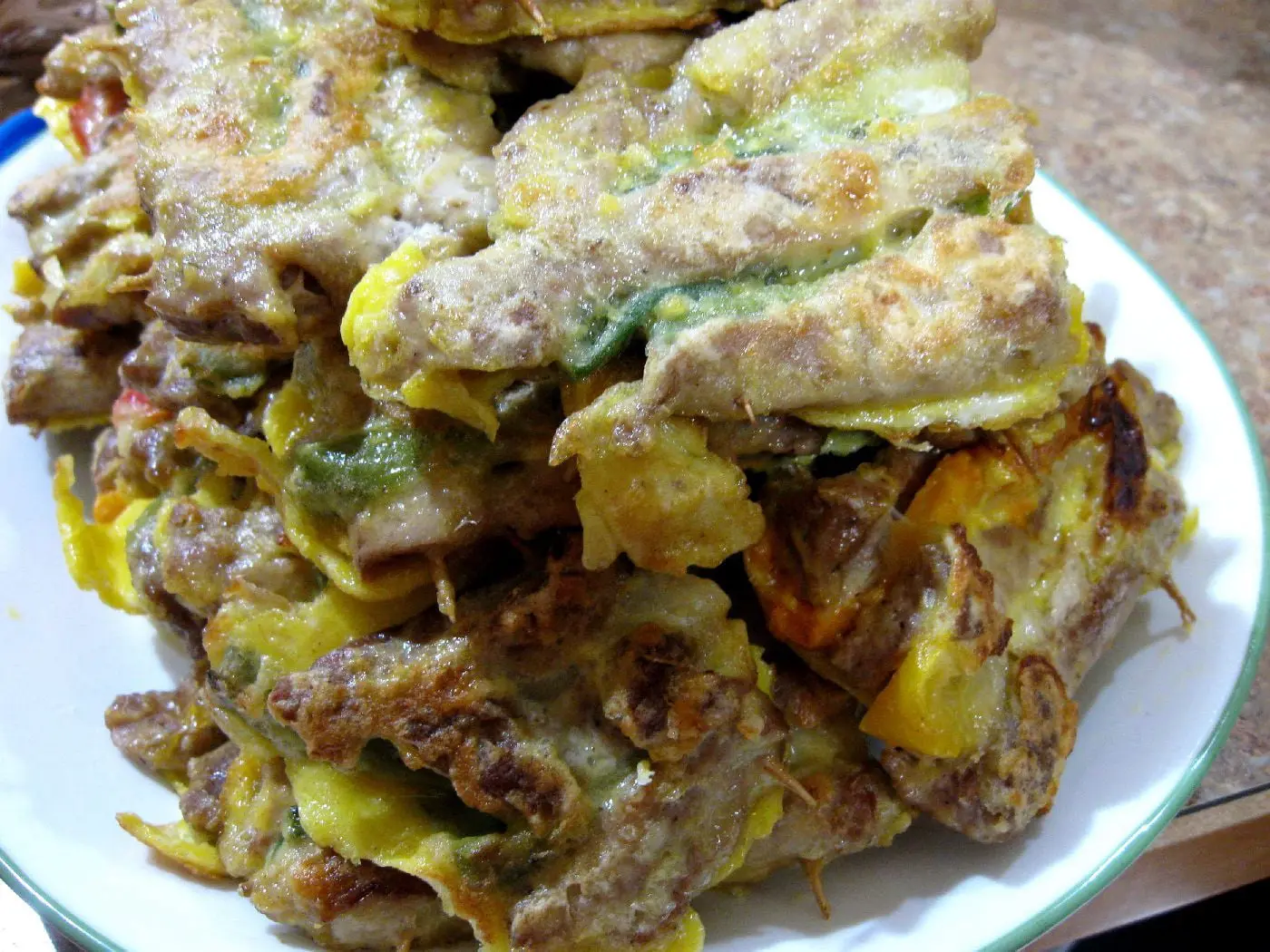Recipe for Dwaejigogi Jeon - A Korean Fried Pork Dish

Article by Gil "hannaone"
© Copyright 2024. All rights reserved.
Image by hannaone: Pork Jeon
A mouthwatering Korean fried pork dish, Dwaejigogi Jeon is made with thinly sliced pork that is coated in a light batter and fried to crispy perfection. Originally a Royal Court dish, Jeon has become popular throughout Korea. It's often served as an appetizer or side dish, but also as a main course. Koreans and visitors alike love Dwaejigogi Jeon because of its flavorful combination of ingredients and simple preparation.
In general, Jeon is made by seasoning whole, sliced, or minced ingredients such as seafood, fish, meat, grains, or vegetables. The items are then coated with starch or flour and egg wash and fried. Jeon is available as an appetizer, as a banchan, or as an anju.
Despite being considered a type of buchimgae in a broader sense, jeons are distinct dishes. Jeons are smaller than buchimgae, and are made with fewer and simpler ingredients.
The variety of jeon prepared for ancestral rites is called gannap.
Dwaejigogi Jeon is typically made by thinly slicing pork belly or shoulder into bite-sized pieces before marinating them in a flavorful mixture of soy sauce, garlic, ginger, and sesame oil. The marinated pork is then coated in flour and egg wash before being fried to golden perfection in hot oil.
The word "Jeon" itself refers to a variety of savory pancakes in Korean cuisine. Dwaejigogi Jeon specifically features thinly sliced pork that is coated in a light batter and pan-fried to crispy perfection. Its origins are traced back to humble beginnings when ingredients were simple yet flavorful.
While Jeon was extensively used in Korean royal court cuisine, especially for meat-based varieties, some types became popular with common folk who often added vegetables to their jeon since meat was expensive in Korean royal court cuisine.
When rice was scarce during the Joseon Dynasty, jeon made from wheat or buckwheat flour was eaten as a main course.
Families would gather to prepare and eat different types of jeon during Korean holidays and special occasions such as Lunar New Year and Chuseok (Korean Thanksgiving).
Korean society, including its culinary traditions, continues to be influenced by the Joseon Dynasty (1392–1910).
Ingredients:
1 lb pork shoulder
2 each eggs
3/4 cup flour
1/4 cup potato starch
salt
pepper
vegetable oil to pan fry
Marinade:
2 tablespoons soy sauce
2 tablespoons water
1 ounce ginger, peeled
4 cloves garlic, peeled
2 tablespoons honey
1 teaspoon rice wine
1 teaspoon lemon juice
Directions for Dwaejigogi Jeon
Mix Marinade
Place the first four ingredients in a blender and liquify.
Transfer to a mixing bowl, add the rest of the marinade ingredients and mix well. Let stand 1 hour at room temperature.
Cut meat into roughly 1/2 inch by 1 1/2 inch strips.
Lightly salt & pepper each strip and let stand for ten minutes.
Add meat to marinade and let stand in the refrigerator for 2 hours.
Cook:
Pat the meat dry after removing it from the marinade.
Combine flour and starch.
Add 2 to 3 tablespoons cooking oil to a non stick pan over medium heat.
Dip meat in flour mix, dip in beaten egg, and fry for about 2 minutes per side (just lightly browned).
Serve with a soy sauce based dipping sauce.
It can be served as a side dish (Ban Chan), as part of a meal, as a drinking snack with kimchi, or as an appetizer.
Variation:
Place the marinated meat on mini skewers with asparagus stalks, different colored bell pepper, and/or green onion all cut to the same length as the meat.
Dredge through the flour mix and place in a lined steamer tray.
Steam the pork skewers for about five minutes, or until the flour/starch coating sets.
Remove from steam tray and dip in egg, then fry as above.
Served as ban chan, a drinking snack (anju), or as part of a special day meal.



